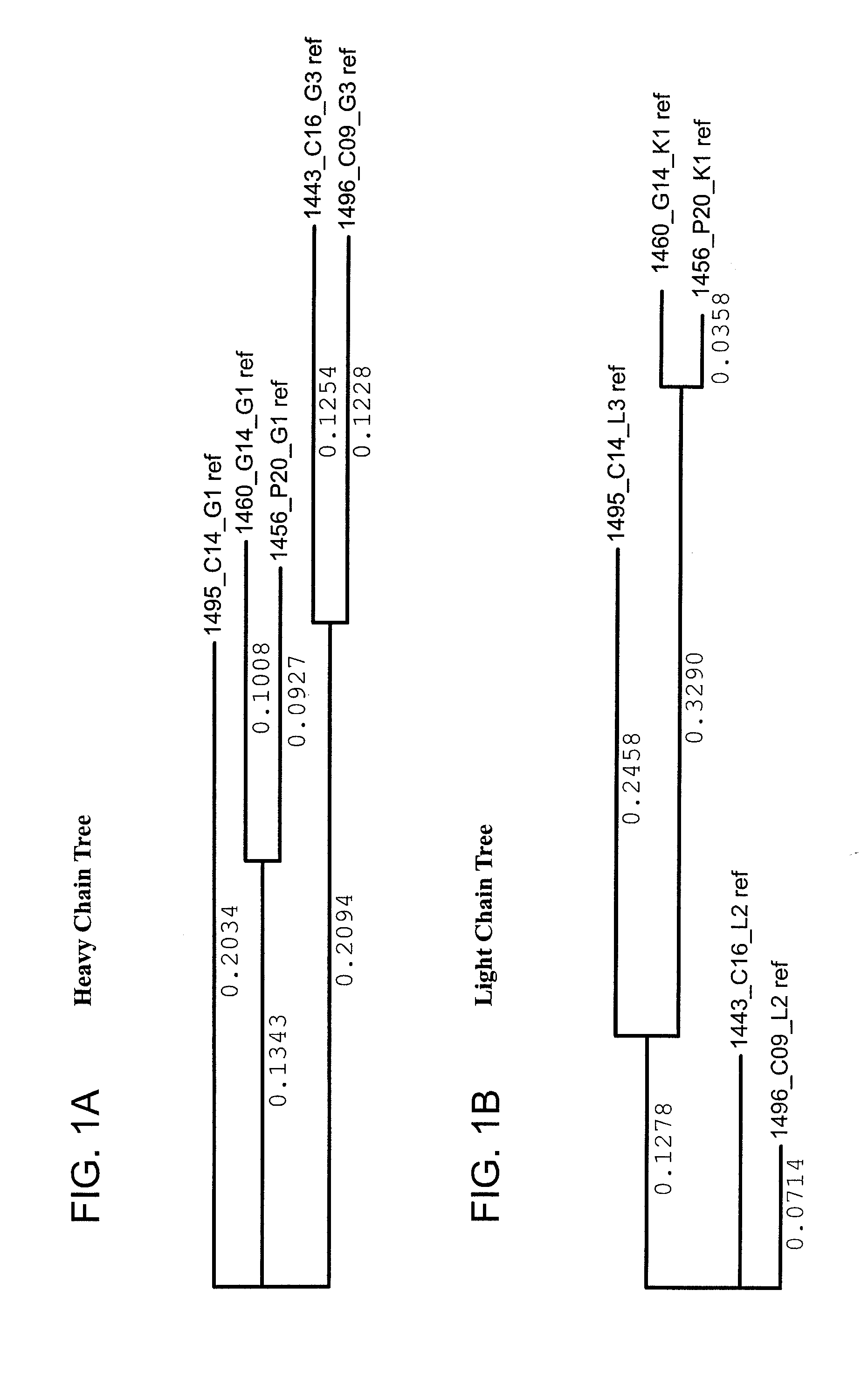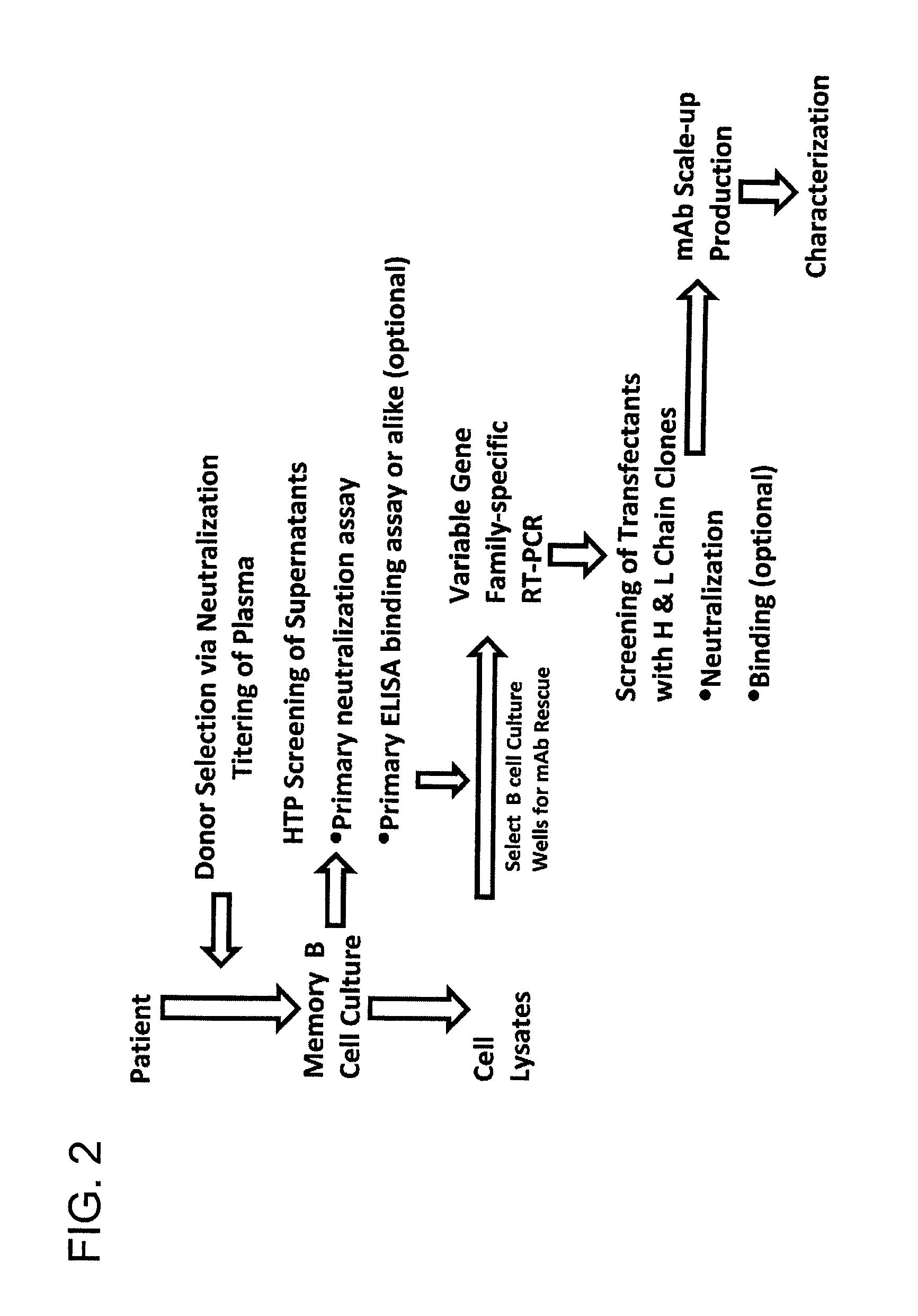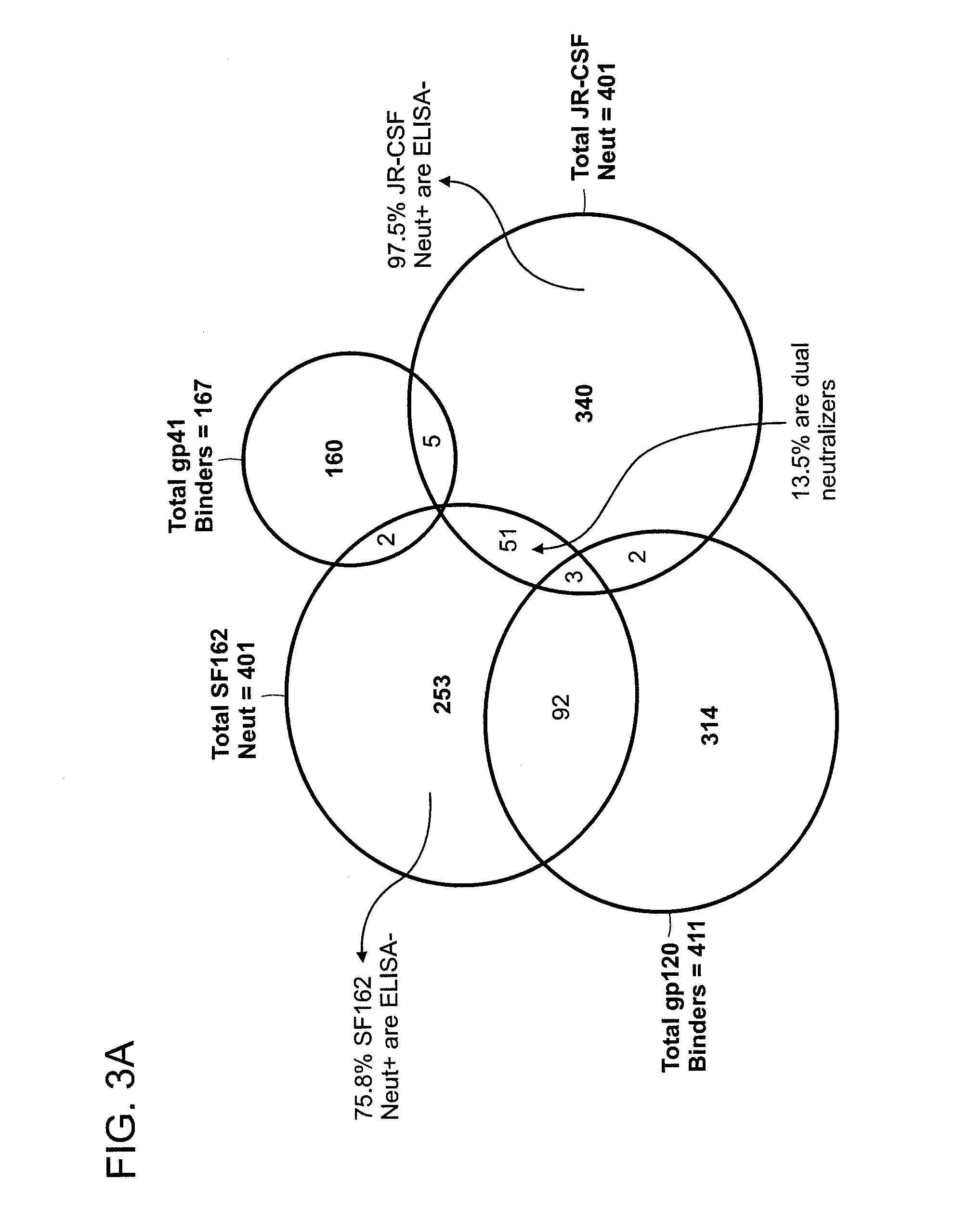Human immunodeficiency virus (HIV)-neutralizing antibodies
a technology of immunodeficiency virus and neutralizing antibodies, which is applied in the field of therapy, diagnosis and monitoring of human immunodeficiency virus (hiv) infection, can solve the problems of progressively destroying the body's ability to fight infections and certain cancers
- Summary
- Abstract
- Description
- Claims
- Application Information
AI Technical Summary
Benefits of technology
Problems solved by technology
Method used
Image
Examples
example 1
Selection of Patient Sample
[0405]Serum from approximately 1,800 HIV-1 infected donors from Asia, Australia, Europe, North America and sub-Saharan African countries were screened for neutralization activity and donors who exhibit among the broadest and most potent neutralizing serum activity observed to date were identified. (Simek, M. D., J Virol (2009)). Monoclonal antibodies were generated from these donors using different approaches.
[0406]A patient was selected based upon the patient's eligibility for enrollment, which was defined as: male or female at least 18 years of age with documented HIV infection for at least three years, clinically asymptomatic at the time of enrollment, and not currently receiving antiretroviral therapy. (Simek, M. D., J Virol (2009 July) 83(14):7337-48). Selection of individuals for monoclonal antibody generation was based on a rank-order high throughput analytical screening algorithm. The volunteer was identified as an individual with broad neutralizin...
example 2
Generation of Monoclonal Antibodies
[0408]The human monoclonal antibody discovery platform utilized a short term B cell culture system to interrogate the memory B cell repertoire. 30,300 CD19+ and surface IgG-expressing memory B cells were isolated from ten million peripheral blood mononuclear cells (PBMC) of the HIV-1 infected donor. CD19+ / sIgG+ B cells were then seeded in 384-well microtiter plates at an average of 1.3 cells / well under conditions that promoted B cell activation, proliferation, terminal differentiation and antibody secretion. Culture supernatants were screened in a high throughput format for binding reactivity to recombinant gp120 and gp41 indirectly and directly immobilized on ELISA plates, respectively. In parallel, the culture supernatants were also screened for neutralization activity in a high throughput micro-neutralization assay.
[0409]Heavy and light variable regions were isolated from lysates of selected neutralizing hits by RT-PCR amplification using family...
example 3
Screening of Monoclonal Antibodies for Binding to Recombinant gp120 and gp41 by ELISA Assay
[0410]Recombinant gp120 with sequence derived from gp120 of primary HIV-1 isolate JR-CSF and expressed in insect cells was obtained from IAVI NAC repository. Recombinant gp41 generated with sequences derived from HxB2 clone of HIV-1 and expressed in Pichia pastoris was manufactured by Vybion, Inc., obtained from IAVI NAC repository Sheep anti-gp120 antibodies used as capturing agent to indirectly immobilize gp120 on ELISA plates was purchased from Aalto Bio Reagents (Dublin, Ireland). All ELISA assays were conducted at 25 μL / well on MaxiSorp plates from Nunc.
[0411]In anti-gp120 ELISA, recombinant gp120 (0.5 μg / ml) was captured on 384 well ELISA plates pre-coated (at 4° C. overnight) with goat anti-gp120 (5 μg / ml) in BSA-containing assay buffer (PBS with 0.05% Tween-20) for 1 hr at room temperature. After excess gp120 was removed and plates were washed thrice with assay buffer, B cell culture s...
PUM
| Property | Measurement | Unit |
|---|---|---|
| inhibitory concentration | aaaaa | aaaaa |
| dissociation constant | aaaaa | aaaaa |
| concentration | aaaaa | aaaaa |
Abstract
Description
Claims
Application Information
 Login to View More
Login to View More - R&D
- Intellectual Property
- Life Sciences
- Materials
- Tech Scout
- Unparalleled Data Quality
- Higher Quality Content
- 60% Fewer Hallucinations
Browse by: Latest US Patents, China's latest patents, Technical Efficacy Thesaurus, Application Domain, Technology Topic, Popular Technical Reports.
© 2025 PatSnap. All rights reserved.Legal|Privacy policy|Modern Slavery Act Transparency Statement|Sitemap|About US| Contact US: help@patsnap.com



